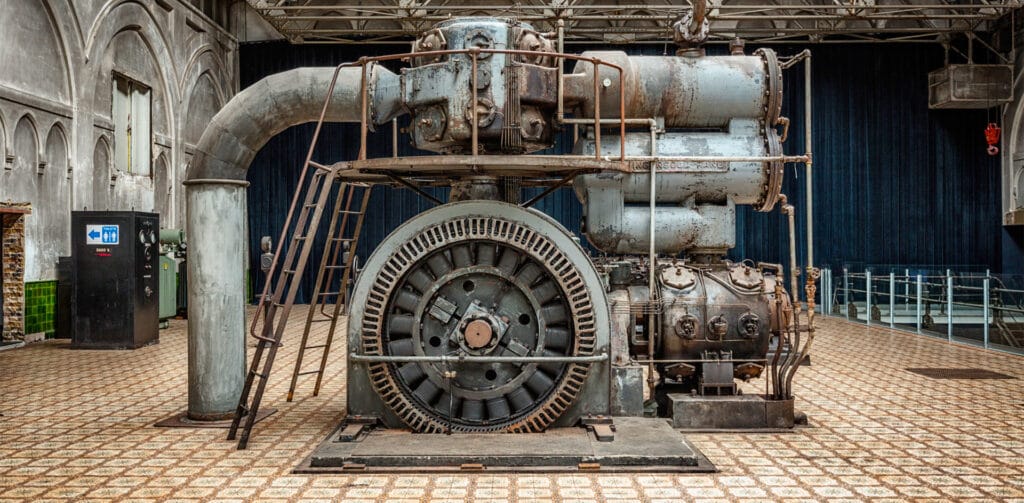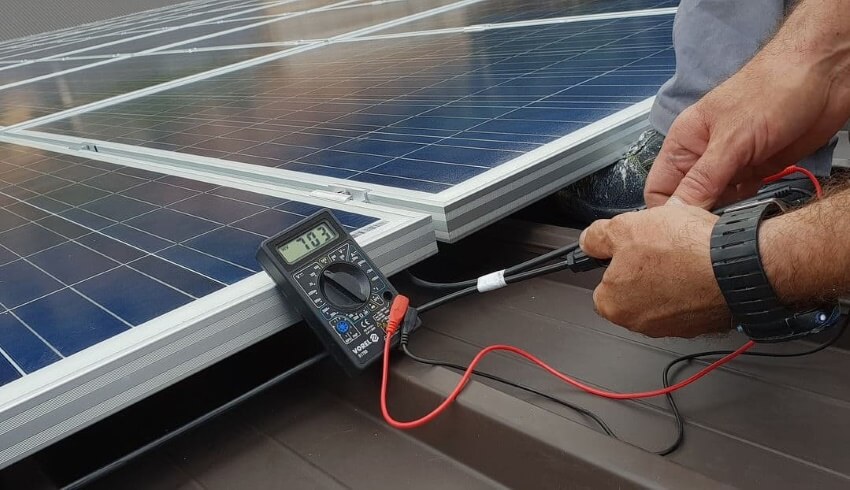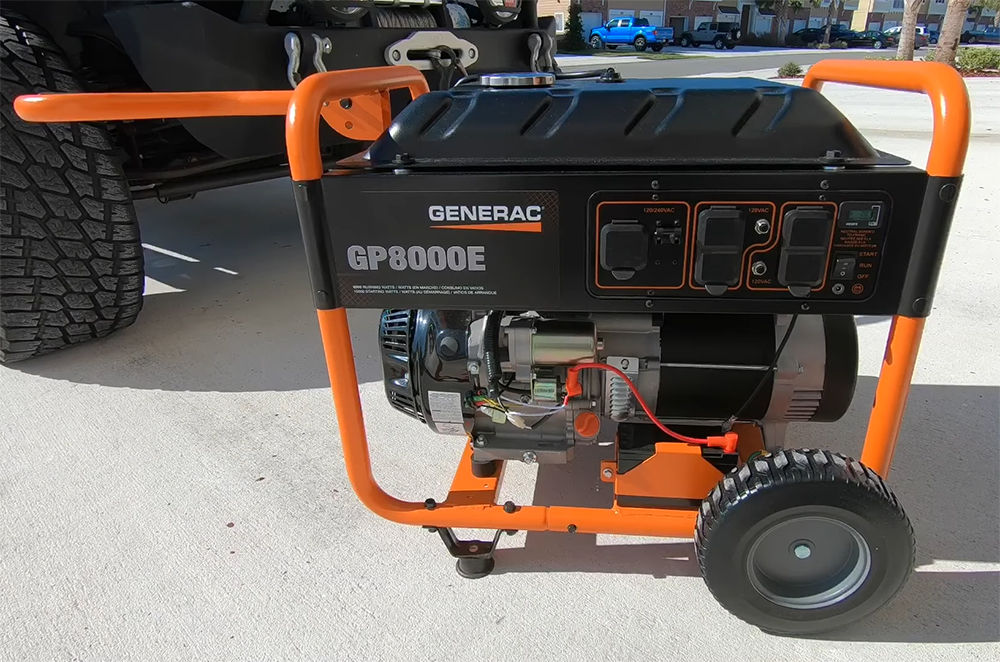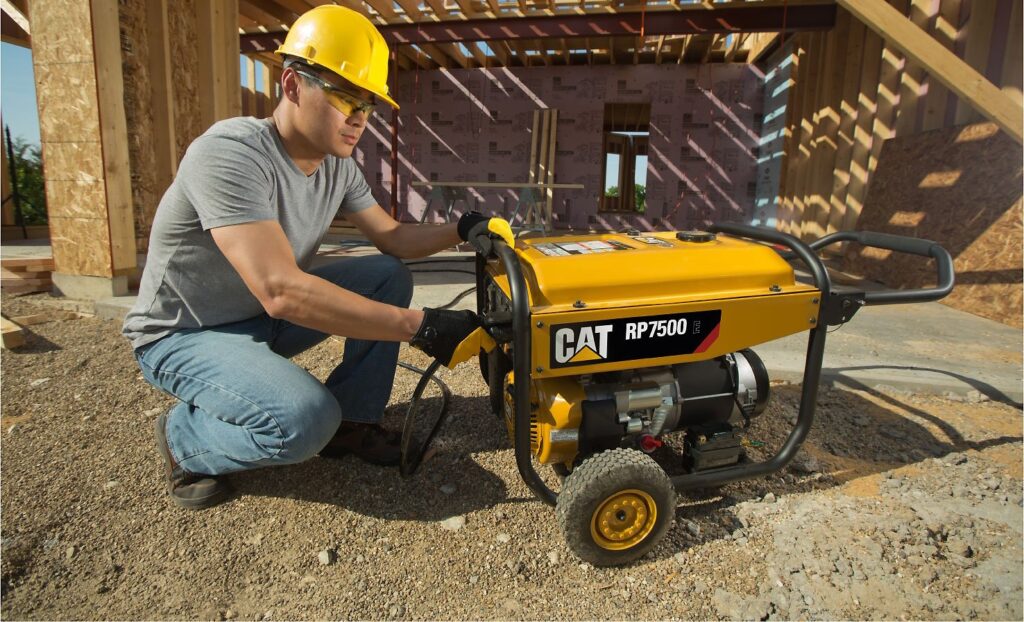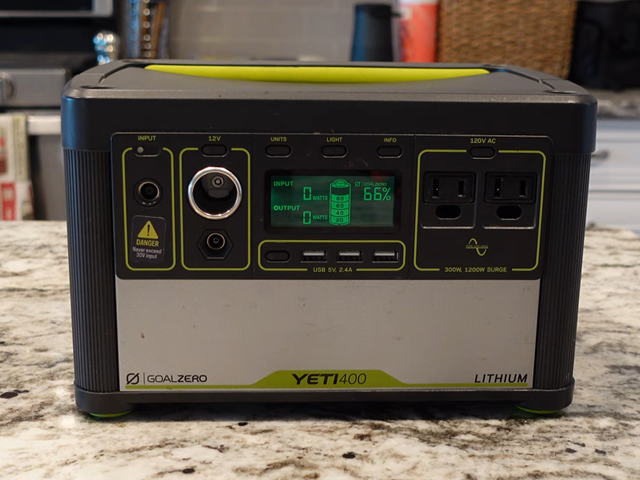
When you’re out in the water, it doesn’t mean that you have to sacrifice having easy access to electrical power. Generators have come a long way in the last several years, allowing you to have all kinds of options. But depending on your boat, there are many things you need to take into consideration. Smaller boats probably won’t be able to handle a permanently installed generator. Which is why there are all kinds of smaller, more portable options out there. Noise is also a big consideration when you’re on a boat and have limited space. Inverter generators are quieter and more fuel-efficient, making them the unit of choice for use on a boat.
To find the best generator for a boat out there, we rated the top generator models by engine power, rated/maximum output, fuel tank capacity, noise level, weight, and portability. We also noted whether the generator had issues with the pull-starter, carb clearance for storage and oil fill. Engine power is an important consideration because you need to know that the generator you choose can keep up with the demands of whatever job you need it to do. With marine generators, it is especially important to note fuel tank capacity, because you don’t want to run out of fuel in the middle of nowhere. Since space is at a premium on boats, you will want to make sure the generator’s noise level stays at a comfortable purr, so it won’t interfere with any of your activities. Weight and portability to carry the generator to and from your vessel have also been considered. Each extra pound aboard a vessel will affect its speed and buoyancy, so it’s important to know your vessel’s capacity and consider the weight of the generator.
We searched out customer and expert reviews and product specs for each of the top generator brands and have listed our findings in the table below. The generators have been listed according to our ranking. Included also is a detailed review of each product, and a buying guide that we hope will clear up the most important things you need to know before taking a generator aboard.
The Briggs & Stratton P2200 functions as well as an ordinary generator that keeps up with the wattages coming in at 2,200 starting and 1,700 running watts. It does weigh in at the heaviest of all of them, 55 pounds, which is a good 11 pounds heavier than the Yamaha. This would make a significant difference to practical portability for people with back problems or tendonitis.
Some people say they liked the handle, others said the reviews of the 3,000 were mixed in with the 2,200, which confusingly stated that it contained a suitcase-style handle and wheels for east of portability. There were also complaints that the noise level it claims is not what they measured. Many users stated it is louder than the other varieties of generator, for example, the Honda. This would be especially problematic on a boat as sound is multiplied and carried easily over water.
Despite this, there is a switch for turning on “Quiet Power Technology,” which is extremely effective at limiting noise, but it cannot be used at capacity in this mode, although it does save on fuel by reducing RPMs. The PowerSmart mode adjusts the engine speed based on the electrical load.
Some people had difficulties with starting the Briggs-Stratton generator unless it was used quite regularly. Even then, its start is not easy – taking four pulls, a departure from the rest of the pack that start easily with one.
There is a handy LED light system to alert you of output, low-oil and/or impending overload. Also, it does have parallel capability to hook up and combine the power of two units together if you need more power.
While both are quiet generators, it is quite possible the Honda EU2200i is quieter than the Yamaha. The EU2200i operates at 48 to 57 dBA, which is less noise than a conversation in held in “inside voices.” If you are on a boat, it will be even quieter on Eco-Mode, and should not disturb anyone in nearby. The Honda can go from 4.0 to 9.6 hours on one tank of gas, depending on the percentage of load that it is required to power at any given time. This model is an upgrade from its predecessor, which went from 1,600 running and 2,000 surge watts to 1,800 running and 2,200 surge watts in the new model.
It also has a new feature: the fuel shut-off switch, which, as previously stated, allows the carb to run dry so that no buildup occurs to interfere with the ignition in the future. Another update is the oil drain, which now has been fixed so that it no longer spills, but instead runs into the drain pan where it is supposed to go. There is also increased ventilation to avoid overheating the front panel.
The Honda EU2200i weighs 45 pounds without fuel, still light enough to carry easily thanks to the contoured handle. The plastic covering eases the movement of the machine alongside your body as you walk. One last thought: Honda has excellent customer service, readily available parts and many locations throughout the U.S.
The Champion 3400 Watt Portable Inverter Generator is the ideal combination of flexibility and convenience. This contemporary dual fuel generator can run on gasoline or gas. Fuels can be easily changed by quickly turning the gas selector knob. Once the system uses gas, its 79cc motor generates 1,850 running watts and 2,500 watts initially. Using gasoline, the generator can run for 11.5 hours out of a full tank at 25% load capacity.
On the other hand, the motor of the engine provides 1665 running watts and 2,500 starting watts if you use it with propane. The Champions Inverter technology has an advanced economy mode. This can decrease the electric load. At the same time, it allows for quieter operation, offers reduced gas costs and extended engine life. This small RV generator is also equipped with cold start technology, which ensures immediate starting once the weather is cold.
This is just one of the best portable dual gas generators running at 53 dBA. So it doesn’t emit a lot of sounds. In addition, it includes a propane hose using a fixed regulator. The Champion generator comes with a 3-year limited warranty. Plus, it includes FREE lifetime technical support.
The Wen 56200i is a good balance between power and price. It is lightweight enough for ease of portability, quiet enough to avoid disturbing your neighbors while camping, and offers clean power for delicate electronics.
However, it is important to know your wattage and power demands for this one, because it would have trouble exceeding its described wattage and surge start-up wattage. But if you don’t have a lot of demands for this basic generator, it is a lot lower in price for many of the same features as the higher-priced competitors. It may not last as long as, say, the Honda, but it can keep up with your day-to-day needs, as long as they are not too strenuous.
Users have tested it on campgrounds, construction sites, during power outages and tailgates. Switching to the Eco-Mode may be necessary for it to power small appliances one at a time, such as microwaves or coffee makers.
The Wen may be very similar inside to the Yamaha, but it is missing a small door, which makes an oil change a bit more difficult: you have to remove the side of the generator. Having to oil it every 24 hours might be a bit of a pain, given this little flaw. The price tends to fluctuate throughout the course of the year, so make sure you get it when it’s cheapest, around $410.00.
Yamaha EF2200iS comes at around $700–$1000, which makes it also number one among the best generators under $1000. The fuel gauge on the cap is a favorite for customers reviewing the product; the higher-priced Honda did not include one, to its detriment. There is a fuel shut-off valve with a carb clear out feature that allows the tank to dry out before you store it, to avoid problems starting later on. The carb drain gets out every last drop for even longer storage times – say, in the off season.
Additionally, the Eco-Mode allows for lower fuel use for a longer-lasting energy source. The fuel economy is one of the best, and this generator has the longest emission engine durability rating. The closable vent cap prevents fuel spills, and the generator weighs in at 55.2 pounds, making it easily portable to and from the dock.
This 2,000-watt generator can run for up to 10.5 hours straight without refueling at 25% load. It also comes with an easy-to-work recoil pull cord start.
The Pulsar G2319N offers a power output of 1,800 running and 2,300 starting watts, and 6 hours of operation at half load on 1.18 gallons of gas, which is significantly higher than some (when measured) at only 25% load. At 47 pounds, it is lighter than all but the top two, Yamaha and Honda.
At 59 dB, it is reviewed as being quiet from at least 10 feet away, so it would follow that closer up, it is not quite as quiet, similar to the Briggs-Stratton (you need to be 7 feet away). Sine wave technology allows it to be safe for charging delicate electronic devices.
It has parallel capability, so it can be used alongside another one for more power. There is a 5-volt USB outlet and cigarette lighter – this works really well with the cable included when it is used to charge batteries. There were a few issues with the pull starter – they seem to be a bit fragile and are easy to snap.
But overall this device offers a great capability at a good price. A note of caution: the manual directions could be more clear. The battery switch must always be on before you try to pull-start or the auto-choke will flood the engine. Also, in order to manually shut down the generator, you must use the auto start/stop button.
In this buying guide we have answered some common questions which can lead you through the ins and outs, frequently-asked-questions and common misconceptions which will affect your considerations when purchasing a generator.
A generator must be lightweight and portable enough so you can easily take it to/from your boat. You should prepare your generator for a boat. You need to make sure that there are no exposed metal or metal parts inside the generator that might rust when exposed to humid conditions or salt spray.
It is fairly easy to take the screws out and remove the plastic outer cover of the generator in order to cover the screws and hardware in rust-preventing spray paint. Use something like Bowsheild T-9 to cover the electrical parts of the generator, and high heat paint for muffler if you are concerned about moderate heat build-up in tighter spaces on the boat.
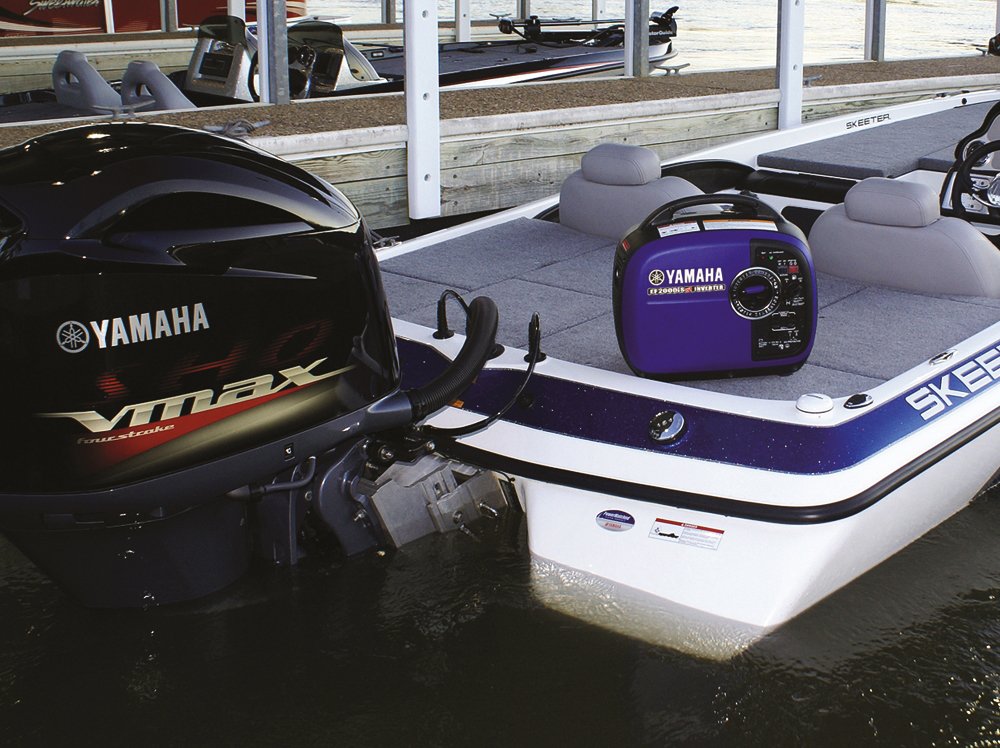
According to the National Electrical Code 250.34 Generators-Portable. “The frame of portable generator is not required to be grounded to the earth if the generator only supplies equipment or cord-and-plug-connected equipment through receptacles mounted on the generator, or both, and [the] metal parts of the generator and the grounding terminals of the receptacles are bonded to the generator frame.”
Under conditions that are the same as the NEC, OSHA directs (29 CFR 1926.404(f)(3)(i)) that “the frame of a portable generator need not be grounded (connected to earth) and that the frame may serve as the ground (in place of the earth).”
If you want to power some simple things like hair dryer, electronics, and small devices like a coffee maker or microwave, or even a dishwasher on your boat, then a small portable inverter generator should be more than enough to meet your power needs, like for a example Wen model, which is also considered to be one of the best Wen generators.
However, if you must have air conditioning or appliances that suck up a lot of power in a short time, like a fridge/freezer, then you might as well consider going with a traditional, more permanent marine generator.
The generator you choose must have enough power capacity and the correct outlets for the specific devices you have, and the combined wattage to power them, concurrently if necessary. Many inverter generators have more than one mode, so they can be used to power a greater or lesser load at different times, without compromising the integrity of the output. Most also have eco-modes to reduce the RPMs to save gas while powering smaller loads.
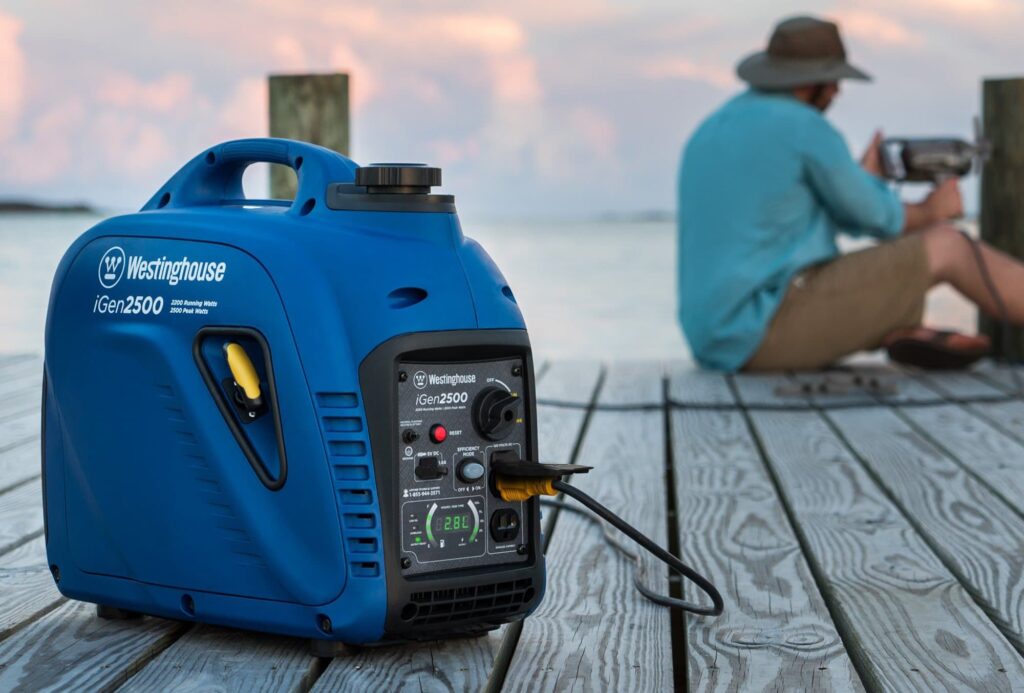
An inverter, on the other hand, draws power from a fixed DC source (i.e.: battery) and inverts the power into usable (most likely 120V) AC current.
Inverter generators combine the best of both worlds through the use of advanced electronics. They combine the technologies of both traditional generators and traditional inverters to first generate AC current, which is converted to DC, then inverted back to AC power in a pure sine wave that will not fluctuate and cause problems for its users.
And please don’t forget the option of the portable power station, which will be also suitable and less noisy, especially for shorter trips.
You must calculate the amount of time which you need the generator to run and then compare this with the generators which are listed here. They have different runtimes and fuel capacities. In addition, certain fuels have better economy than others.
Propane powered generators don’t get as far on the same amount of fuel because unfortunately, propane has less potential energy in its raw form than either gasoline or diesel.
From Wikipedia, “propane is capable of producing 84,300 BTU’s per gallon, gasoline is capable of producing 114,000 BTU’s per gallon, and diesel is capable of producing 129,500 BTU’s per gallon. In layman’s terms, 26% more propane is needed to produce the same amount of energy as 1 gallon of gasoline.”
Accordingly, 35% more propane is needed to produce the same amount of energy as 1 gallon of diesel, as it is in case of the best diesel generator. A converted Honda EU2000i generator could use a 20–30-pound propane tank.
The generator specs given in this article can be used to determine average times that the given generators will run on a partial load. It follows that if the load is increased, the runtime will decrease accordingly.
If you need to run a lot of appliances on your generator for a longer time, it may be worth it to invest in one of the more expensive, longer-lasting generators such as the Honda or Yamaha. Or you could try the Champion, which is more budget-friendly.
The design of a generator has more to do with noise level than the fuel used to power it. It is helpful to check the noise rating (and the fine print included there) to determine just how noisy or quiet a generator will be.
Some generators will be noisier because their rating was determined from 7 to 10 feet away, whereas the noise level of others was tested whilst standing right next to it. Most of the inverter generators that we have reviewed here were created to be less noisy (or around the same) as a normal conversation or the quiet hum of a coffee shop.
Check how far away from the generator it was tested to determine how close you can be to enjoy this lower noise level.
Keep in mind that small, portable inverter generators that are reviewed here are specifically designed to be quieter than the larger, traditional varieties. This can be a good thing if you are going to be in closer proximity with other people, or of higher levels of noise will bother you.
Safety is important, especially when you’re on board. Let’s have a look at the safety features that are essential in a marine generator and a couple of things that can add to your protection while using a generator.
Look for a generator with this feature that will shut itself down in the event of a possible overheating situation that could wreck it.
Some generators have this feature included already; with others, you may need to buy an emergency stop button kit and install it yourself.
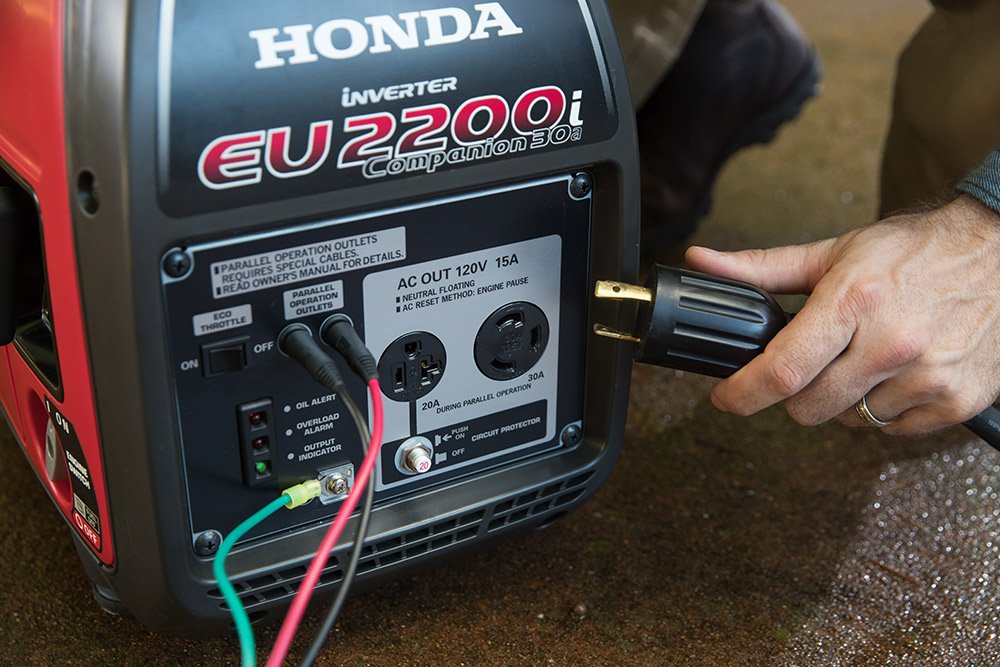
A delicate sensor is placed on the outgoing power source which monitors the amount of power leaving it. If the power surges for any reason, the power source cuts itself off, possibly saving your life, or the life of someone you love.
It is common sense to have a fire extinguisher on your boat, but doubly so if you have a portable generator with an independent motor creating heat and exhaust. There is a lot of energy and electricity being contained within a small area, and sometimes the unexpected can happen.
Make sure you have at least one, probably even two carbon monoxide detectors located in the cabin of your boat in case the generator’s fumes incidentally end up in your living space. Follow the manufacturer instructions, talk to friends and experts, and read the following guidelines on safely placing and installing a portable inverter generator on your marine vessel.
Installation
Maintenance
Grounding rules state that you do not have to ground your generator if it only powers things that are plugged in through “electrical receptacles,” and the metal parts of the generator are connected to the generator’s frame, which serves as a “ground,” in place of the earth.
More than one is better, in case one fails. Ventilation is a serious issue on boats, since wind can blow even well-vented, properly directed fumes back over the boat or into the windows. You could also put it on the bow pulpit, but you must make sure the hatches are closed in this case.
You should also cover the electrical parts with some type of protective covering and never take the cover off or service it while it is either turned on, in contact with water or connected to a source of power. These are reasonable precautions to take if you wish to avoid getting an electric shock. In addition, you should protect the metal parts with rust-protective coating.
Always follow all the instructions on the manufacturer’s manual.
Out of all the generators we reviewed, the first, second and thirds spots went to the Briggs & Stratton P2200, the Honda EU2200i and the Westinghouse iGen2500, respectively.
The Briggs & Stratton P2200 was the all-round winner, since it it is an affordable model and scored so high in the most categories, including: one of the longest running, ease of start, PowerSmart mode, dual capability, noise level and good warranty length.
The Honda EU2200i came in second place, having almost identical performance and features. The second placing was mostly because of a slightly smaller fuel tank capacity.
Third place was awarded to the Champion Power Equipment 200961. This model seems to give a lot for a little, having the highest surge watt rating of all the of the competitors. It also has up to 10 hours of continuous runtime on one gallon of fuel.
